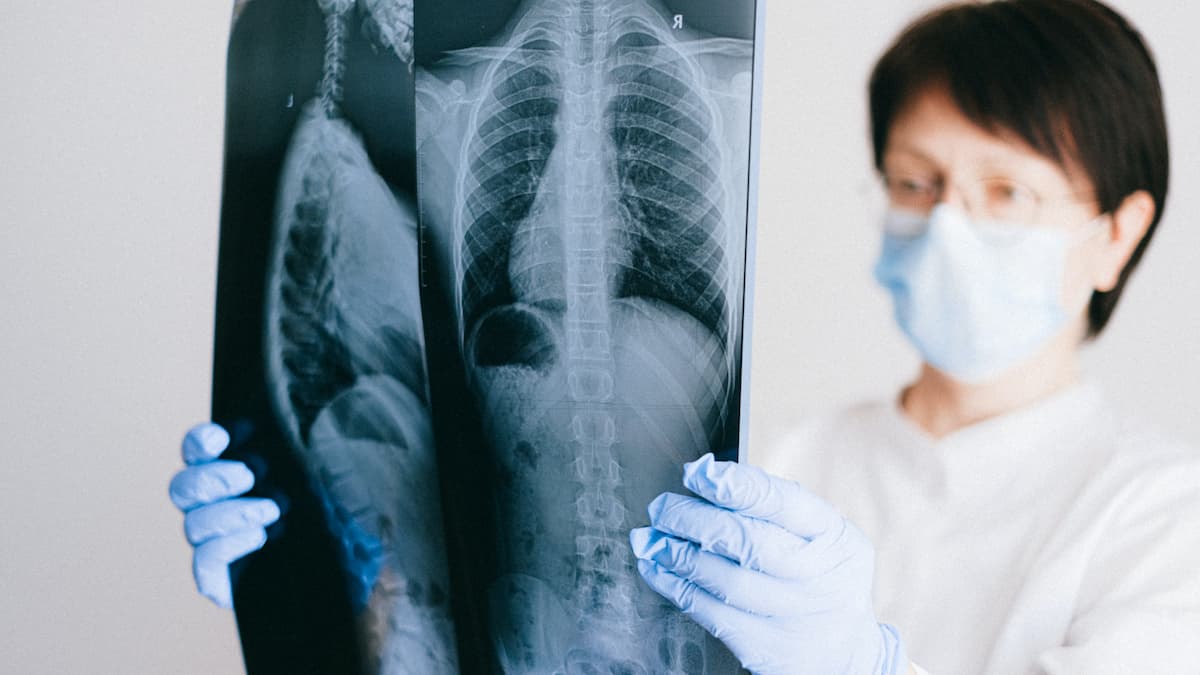Overview
The lungs are the primary part of the respiratory system and provide oxygen to the bloodstream. It also does pulmonary ventilation and prevents the entry of any foreign body into the body system. So, the lungs perform the prime role of sustaining a healthy immune system. What if it gets affected? This hampers the functioning of the body and weakens immunity as well. There are various lung disorders like COPD, asthma, Bronchitis, Pulmonary TB, Pneumonia, Interstitial lung disease (ILD), etc. Today, we are going to discuss ILD and its management with Ayurveda including Yoga and Pranayama.
What is Interstitial Lung Disease (ILD)?
Interstitial Lung Disease (ILD) is also known as Diffuse Lung Parenchymal Disease (DLPD). This is a progressive disease of the interstitium of the lungs which leads to inflammation and scarring at later stages.
Causes of Interstitial Lung Disease (ILD)
It can be caused by any of the following
- Exposure to certain microorganisms such as fungi, bacteria, etc.
- Inhalation of foreign particles like dust, asbestos, coal dust, talc, grain dust, and bird proteins.
- Autoimmune conditions like RA, AIDS, Ulcerative colitis, etc.
- Intake of amiodarone, nitrofurantoin, sulfonamides, etc drugs increases the risk of ILD
- Radiation treatment
- Excessive smoking
- Genetics or heredity
- Age more than 50 years increases the risk of ILD
Symptoms of Interstitial Lung Disease (ILD)
Patients with ILD may suffer from the below symptoms
- Dyspnoea
- Dry and nonproductive cough
- Fever
- Discoloration and enlarged base of fingernails
- Fatigue
- Pain in joints
- Pain in chest
- Bluish discoloration of lips, fingers, and skin (due to low concentration of oxygen)
- Muscular Ache
- Chronic mucus production
- Wheezing
- Loss of weight
Diagnosis of ILD
Diagnosis can be done with Blood tests, Sputum tests, CT scans, MRI, Lungs X-Ray, etc. and treatment can be done symptomatically with bronchodilators, muscle relaxants, corticosteroids, decongestants, etc.
Management of Interstitial Lung Disease (ILD) with Yoga and Pranayama
In Ayurveda, diseases can be managed with ayurvedic herbs and herbal formulations along with some dietary and lifestyle modifications. Today we will talk about lifestyle modification that should be done by ILD patients and the answer is Yoga and Pranayam. We can manage this condition very well with Yoga and Pranayam. So here are some Yoga practices which should be performed by the patient.
1. Sheetkari pranayama
Also, we can say the cooling breath. Also known as the cooling breath, this breathing exercise is extremely beneficial for individuals with ILD. It enhances the circulation of blood in the lungs and alleviates all harmful toxins. This also increases the oxygen-carrying capacity of the lungs. It is better to practice it outdoors. Sit in Sukhasana and Close your eyes gently. Inhale the air from the mouth and exhale it from the nose. It’s one respiration and you have to repeat it 30 times.
2. Sheetali Pranayama
Sheetali Pranayama holds great importance in recovering patients with ILD as it is a replacement for Sheetkari pranayama. It’s better to do it in the fresh air as it detoxifies lung cells and improves lung blood circulation. It also increases the vital capacity of the lungs and prevents the risk of respiratory infections. You just have to sit in Easy Pose. Now roll the tongue in the form of a tube and fit it in between both lips. Inhale the air from the tongue and fill the stomach with it. Be in this for 5 seconds and exhale through the nose. Repeat it 10 times. Avoid doing it in cold weather.
3. Ardha Matsyendrasana
Ardha Matsyendrasana helps in stretching and strengthening intercostal muscles and promotes healthy breathing. It also helps in maintaining the oxygen saturation level. You just have to sit on a mat with extended legs. Keep your heels on the mat and bend the left leg until it reaches the knee with the straightened right leg. Now put your right hand on your left ankle and your left hand behind your back. Then move the chin toward the shoulder and exhale. Be in this position for 10-15 seconds and repeat it 3-4 times.
4. Bhujangasana
Bhujangasana is also known as Cobra Pose. It is very good for ILD patients. It not only improves mental calmness but also strengthens the chest muscles and lungs. This also has a soothing effect on sciatica, asthmatic patients, etc. Along with that it also increases blood circulation and maintains the lungs filling capacity. Now lie on your stomach with arms aside. Then put your hands parallel to the chest with your palm facing downward. Now look upwards and bend your spine backward with the stomach resting on the mat with slightly bent elbows. Inhale while doing so. Be in this position for 10-15 seconds.
5. Padma Sarvangasana
It is also known as Lotus Shoulder Stand. This posture allows the lungs to expand properly and nourishes the intercostal muscles. It also increases air entry in the lungs and enhances blood circulation. Start doing this posture by Salamba Sirshasana. Fold your legs such as your left ankle should be on the right thigh and vice versa. Support your back with your hands. Now, be in this position for 10- 15 seconds or as long as you can hold, and then exhale the breath.
6. Paschimottanasana
Paschimottanasana is also known as a Stretched Back Pose. This posture helps in decreasing breathing difficulties, stress, and tension. It also helps in better circulation of oxygen in the lung cavity. It also helps in boosting the immune system and clear lungs infection. Just sit on the mat and straighten your legs. Now inhale and lean forward until your nose touches your knees. Be in this position and exhale while touching your chin with your knees and at minimum do 3 repetitions.
Conclusion
Therefore, we can conclude that ILD impacts the quality of life gradually, so the above-mentioned tips are very helpful and useful in improving lung functions by increasing the vital capacity of the lungs, enhancing blood circulation, and strengthening the intercostal muscle, and diaphragm. Ayurvedic medicine science mainly focuses on diet and lifestyle along with herbal medicines and herbs. So follow these asana and pranayama procedures and stay fit and healthy.

Dr. Vikram Chauhan (MD-Ayurveda) is an expert Ayurvedic Doctor based in Chandigarh, India, and doing his practice in Mohali, India. He is spreading the knowledge of Ayurveda – Ancient healing treatment, not only in India but also abroad. He is the CEO and Founder of Planet Ayurveda Products, and Planet Ayurveda Clinic. He can be reachable for online consultation through [email protected].
